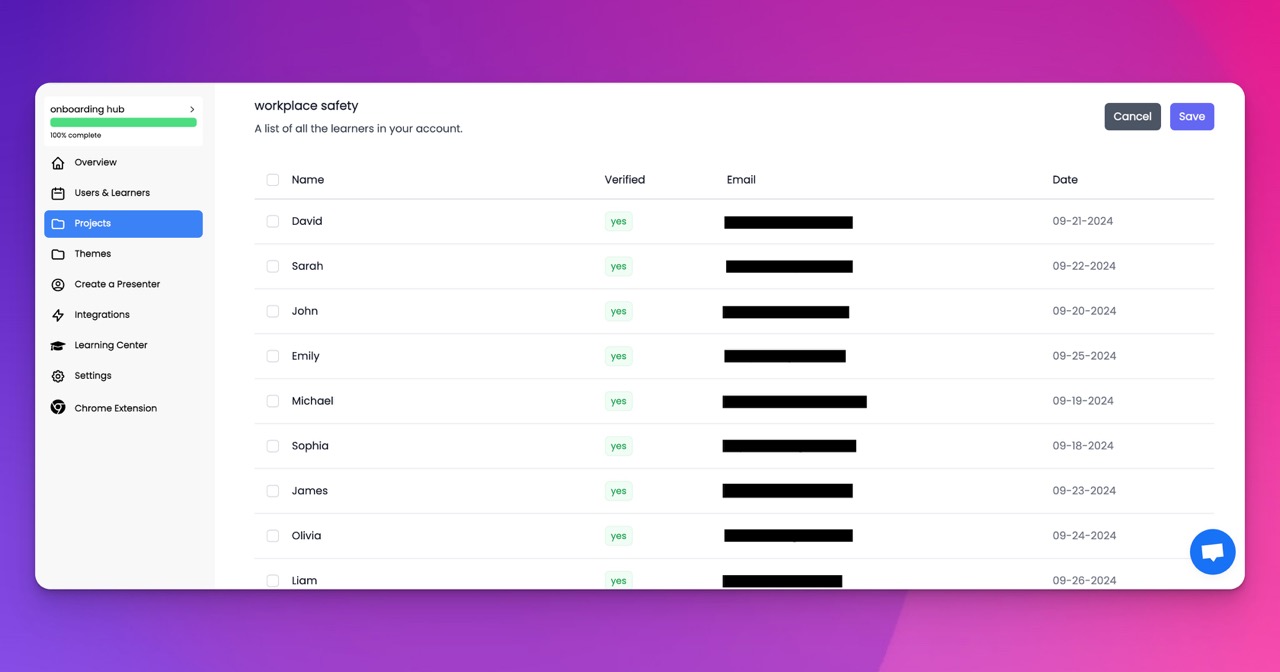🎉 Trainday now integrates with Zendesk and Hubspot 🎉 Trainday now integrates with Zendesk and Hubspot 🎉 Trainday now integrates with Zendesk and Hubspot
🎉 Trainday now integrates with Zendesk and Hubspot
🎉 Trainday now integrates with Zendesk and Hubspot
Contact
Safety by Design: Leveraging Data for Effective Training in the Construction Industry
In the construction industry, where safety is paramount, leveraging data to design effective training programs is critical. "Safety by Design" explores how integrating data analytics into training strategies can significantly improve safety outcomes. By systematically using data from incidents, operations, and worker feedback, construction companies can create highly focused training initiatives that address specific risks and enhance overall safety practices. This blog post discusses how data-driven insights are instrumental in developing training programs that not only comply with safety regulations but actively promote a culture of safety across all levels of the organization.
Harnessing Data to Identify Training Needs
The first step in crafting effective safety training involves using data to pinpoint specific areas of risk and opportunity within construction operations.
Analyzing Incident Reports and Safety Audits
By reviewing and analyzing patterns in incident reports and safety audits, companies can identify common safety breaches and areas of recurrent risk. This analysis helps focus training efforts on reducing specific hazards that have historically led to accidents, ensuring that training is both relevant and targeted.
Worker Feedback and Performance Data
Incorporating feedback from workers provides additional insights into potential gaps in existing training programs and highlights areas where additional instruction may be needed. Performance data, including the results of safety compliance checks and task execution assessments, can further refine training needs, aligning them more closely with operational realities.
Developing Targeted Safety Training Modules
With clear data on what areas need improvement, companies can develop training modules that specifically address these issues, enhancing the effectiveness of safety education.
Creating Scenario-Based Training
Using data to inform scenario-based training allows workers to practice handling situations that are directly relevant to their daily tasks and known risk areas. These scenarios help bridge the gap between theoretical knowledge and practical application, making training more impactful.
Focused Skill Development
Data analysis often reveals specific skills that need improvement, such as safely operating particular types of machinery or implementing fall protection systems. Targeted skill development sessions can be designed to enhance competencies in these critical areas, directly reducing the likelihood of accidents related to skill deficits.
Enhancing Engagement Through Data-Driven Insights
Engagement in training programs is crucial for their success. Data-driven insights can help tailor training methods and content to better engage workers and improve learning outcomes.
Personalizing Training Experiences
Data allows companies to personalize training to meet the needs of different groups or individuals within the workforce. Customization can range from varying the training pace to focusing on the most relevant content for each group, increasing engagement and retention of information.
Utilizing Interactive Training Techniques
While not using virtual reality, other interactive techniques such as interactive discussions, hands-on practice, and real-time quizzes can be employed to engage workers actively. These methods help reinforce learning and ensure workers understand how to apply safety practices in their daily tasks.
Establishing Continuous Improvement in Safety Training
The goal of safety training is not only to address current needs but also to adapt to new challenges and technologies as they arise.
Ongoing Data Collection and Analysis
Continuous collection and analysis of new data ensure that training programs evolve to meet changing conditions and emerging risks. This ongoing process helps maintain high safety standards and ensures that training remains up-to-date with best practices and new regulatory requirements.
Feedback Loops for Training Enhancement
Implementing feedback mechanisms where workers can share their insights about the training's effectiveness allows for continuous improvement. Adjustments can then be made to ensure that the training remains relevant, engaging, and effective.
Conclusion
"Safety by Design: Leveraging Data for Effective Training in the Construction Industry" highlights the essential role of data in developing safety training that is both effective and responsive to the specific needs of the construction workforce. By strategically using data to inform every aspect of training design, construction companies can significantly enhance their safety outcomes, ultimately creating safer work environments and promoting a culture of safety that pervades every project.
Accelerate Compliance.
Deliver OSHA-Ready Courses Instantly.
Empower your team with data-driven training solutions tailored to your industry's safety standards. Stay compliant, reduce risks, and boost productivity with AI-powered course creation.
